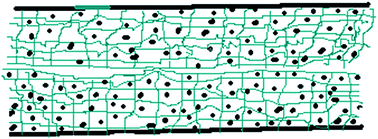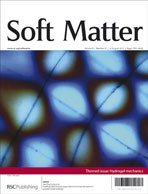Theory of the effects of surface roughness on fluid lubrication of hydrogels
Abstract
Multi-length scale roughness can have important effects on the fluid lubrication of two hydrogel coated surfaces, both in the nonequilibrium situation while the gels are being compressed under an applied load and when the two gels are in equilibrium. For the nonequilibrium case, fluid is expelled from hydrogels coatings on surfaces as they are compressed under an applied load. The model improves upon the picture put forward by Ateshian to describe such a mechanism of the dynamical lubrication of cartilage by including the effects of surface roughness on fluid flow through the interface. The model introduces a length scale h0 ∼ (kηsR2/w)1/3 to describe this, where k is the permeability, ηs is the fluid viscosity, R is the radius of the gel interface and w is the gel thickness. As the mean asperity height at the interface gets smaller compared to h0, the expelled fluid can support a larger fraction of the applied load. As it becomes large compared to h0, however, more of the load is supported by the asperities. When a hydrogel is in equilibrium, it is shown that for sufficiently smooth surfaces, even at a length scale comparable to that of the gel mesh size, the fluid layer thickness will remain larger than a

- This article is part of the themed collection: Mechanics and Physics of Hydrogels

 Please wait while we load your content...
Please wait while we load your content...